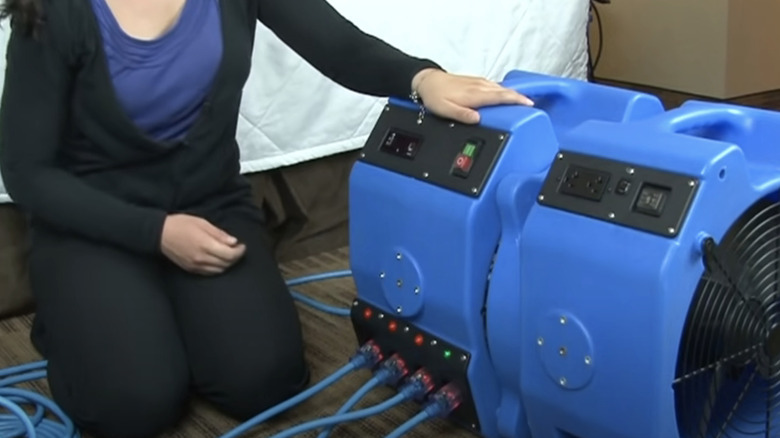Is Heat Treatment Really The Best Way To Get Rid Of Bed Bugs?
It's nearly everyone's nightmare, whether you're a renter or homeowner, to find the red-brown insects known as bed bugs crawling along your bedding. Bed bugs are notoriously difficult to eliminate in the home for a few reasons: they are excellent at avoiding detection, reproduce rapidly, and produce pesticide-resistant eggs. When you have confirmed you have bed bugs in your house, things can feel dire, and you'll want to know the best way to get rid of them. A cursory Google search will show you that high temperatures are one of the preferred methods to get rid of bed bugs, but is it the best?
Heat treatments really do an amazing job of getting rid of bed bugs, but we aren't talking about a quick zap of an iron or hair dryer. Bed bugs need extended exposure to extremely high temperatures (typically around 113 degrees Fahrenheit, according to the Virgina Tech Department of Entomology) in order to be killed at all stages of life. However, heat does have distinct advantages over other treatments. Bed bugs can actually detect insecticides , so if you spray a part of your mattress, carpet, or furniture, the bed bugs may hide away until it wears off. Chemical treatments also can't kill eggs, so after treatment, you may end up with a resurgence. Plus, heat can get to nooks and crannies that chemical solutions may have a difficult time reaching.
How do you get the temperatures that high?
While heat treatment is effective, it isn't exactly easy. That's because it takes a lot of special equipment to actually harness the killing power of heat. Few of us have the equipment necessary to eliminate bed bugs with heat alone in our home, so hiring a professional may prove necessary. That being said, your laundry machine can actually be helpful to you here. When it comes to laundry like clothes, bed linens, couch cushion covers, and soft toys, you can wash and dry on the hottest possible setting to kill bed bugs. Many laundry machines have a sanitizing cycle that runs at extremely high temperatures, but if you don't have the preset, just make sure it's set to use the hottest and longest washing and drying cycles.
Things get more complicated when it comes to the things you can't fit in a laundry machine, like a mattress. You may need to hire a professional, who will set up heat towers in your home. After setting them up, they will radiate heat and bring up the overall temperature of your home, then left at the optimal temperature for several hours to kill both eggs and fully mature bed bugs.
The cons of heat treatment
While heat certainly has its benefits as a bed bug treatment, like its lack of harsh chemicals and effectiveness, it comes with some distinct downsides. Primarily, heat treatments can be more expensive than other bed bug eradication methods. The specialized equipment, fuel or electricity costs, and expertise required can drive up the price. Even if you were to buy or rent the equipment yourself, you'd still have to pay for it on your utility bill, and it isn't cheap to heat a house to 120 degrees Fahrenheit.
Additionally, even though you'll be out of the house and there won't be residual risks lingering as they would from a chemical treatment, things can be damaged in the process. Electronics like laptops and video game consoles do not do well under extreme temperatures. Also, anytime you have a heat tower reaching extreme temperatures, there is a risk of damage to surrounding objects.
Hiring professionals can minimize risk, as they will know how to account for the temperature and how it will affect your belongings, but the risk can't be eliminated entirely. For this reason, it's a good idea to remove valuable objects from the home so long as they aren't part of the bed bug infestation, but this can be inconvenient and off-site storage can be pricey. That being said, not all pest removal specialists actually provide heat treatments, citing increased liability and equipment issues in some homes, and many insist on a follow up chemical treatment.


